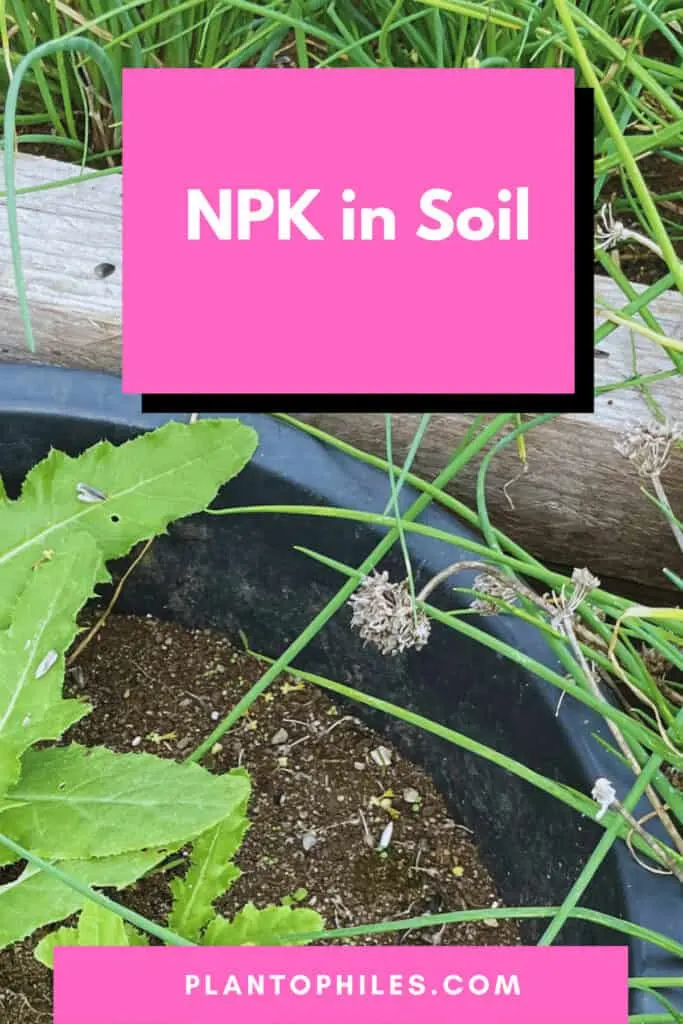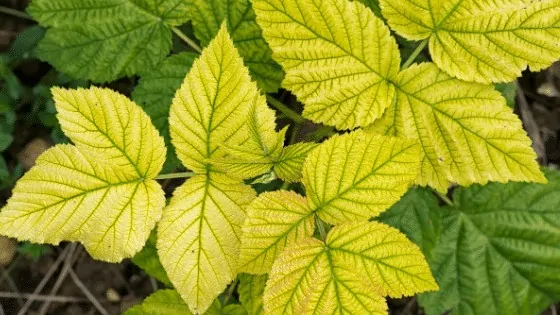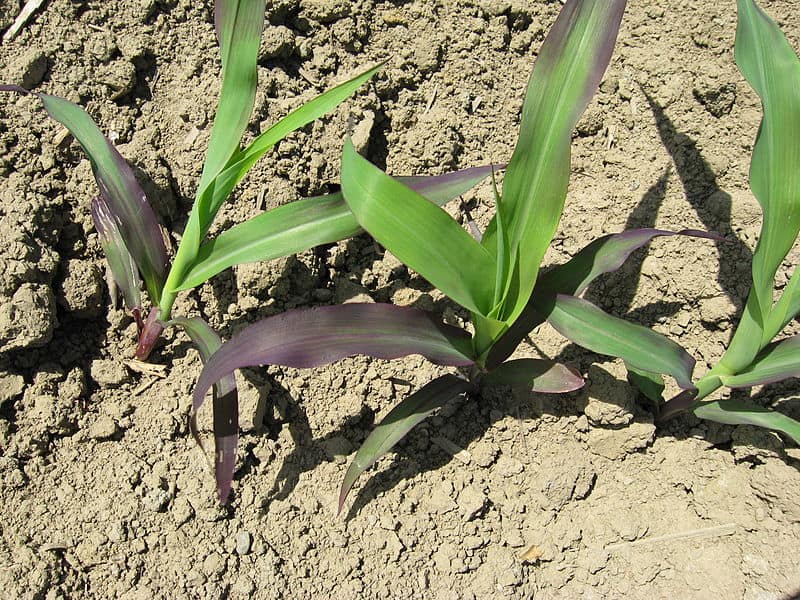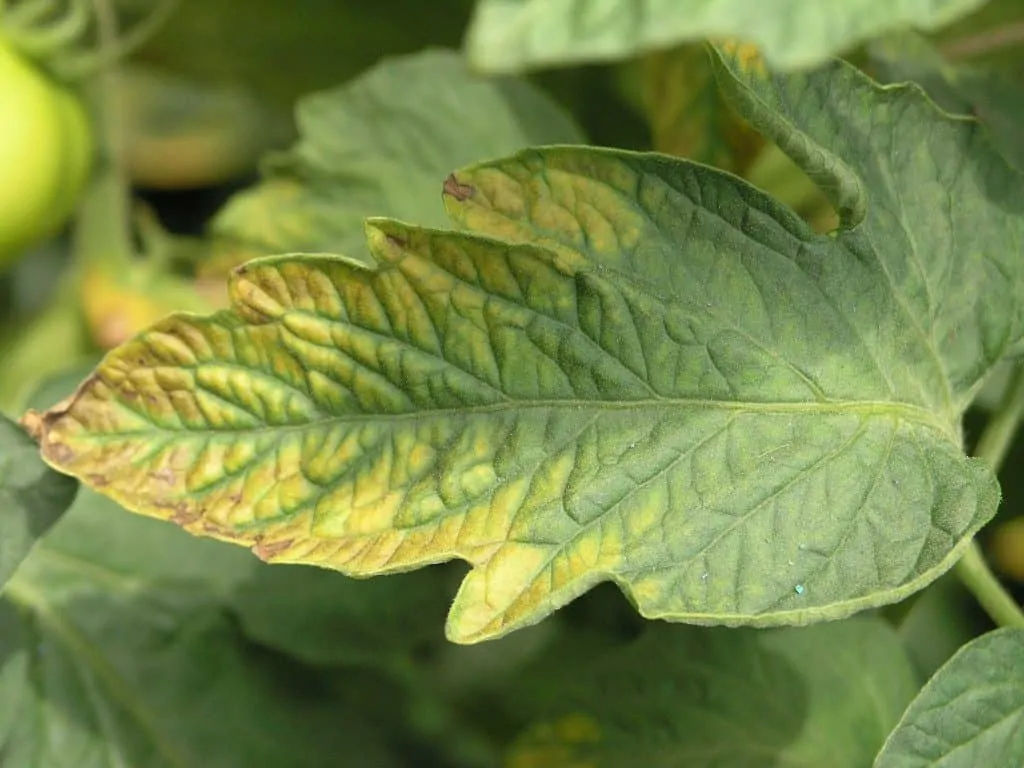You want to learn more about fertilization and have spotted NPK values on a fertilizer. In this article, you will learn about NPK in Soil and more.
We get commissions for purchases made through links in this post.
NPK in Soil
The tree letters NPK stand for the three most essential nutrients in the soil that plants need. N stands for Nitrogen, P stands for Phosphorus, and K stands for Potassium.

In addition, there are other macronutrients in soil, such as calcium (Ca), magnesium (Mg), and sulfur (S). Proper fertilization is essential to keep your houseplants happy and growing well.
NPK Fertilizer Numbers
NPK Fertilizer Numbers indicate nutrient concentration in fertilizers. The higher the number of one nutrient among the others, the higher the concentration. Labels and descriptions on fertilizer use the NPK format to indicate the strength and concentration of each of these nutrients in the fertilizer by a series of numbers.
An example would be a ratio of 10-10-20. Since the order is NPK, this would mean that the concentration of Potassium is twice as high as that of Nitrogen 10 and Phosphorus 10. In addition, 10-10-10, compared to 5-5-5, contains twice as many nutrients: Nitrogen, Phosphorus, and Potassium.
Table of Contents
Let’s now have a closer look at each of these three macronutrients that are also essential nutrients in soil:
(N) Nitrogen
Nitrogen is a major component of chlorophyll in plants. Chlorophyll produces sugars from water and carbon dioxide using sunlight energy. Nitrogen is essential for plant growth.
Although it is one of the most common elements on Mother Earth, it is the main nutrient deficiency plants suffer from. Plants contain about 3-4% of nitrogen. This is measured in the plant tissue above the soil.
Nitrogen Deficiency
Pale green or yellow leaves, as well as poor growth, are common symptoms of nitrogen-deficient plants. The poor growth is a function of the yellow and pale leaves.
These lead to a reduced ability to produce chlorophyll. The yellowing first happens in older leaves. Plants have the ability to transport available Nitrogen (N) to new leaves and growth points. This is why older leaves get pale or yellow first. They eventually fall off completely.
In some plants, the leaves may turn purple instead of yellow. Nitrogen deficiency also makes plants grow smaller and more susceptible to pests and other deficiencies.

How to spot Nitrogen Deficiency
- Yellow leaves / Purple leaves
- Pale leaf color
- Upright leaves
- In extreme deficiencies, the leaves may appear burnt
- Older leaves turn yellow first
- The yellowing starts from the center of the leaves.
- Stunted growth
- Leaves start falling off
- Stems and bases of plants start to turn red or purple
How to prevent Nitrogen Deficiency
Intense growth or stress can encourage Nitrogen deficiency. It is best to use a fertilizer with a high Nitrogen (N) value to prevent a Nitrogen deficiency. There are different types of fertilizers. Foliar sprays are applied directly on the leaves, liquid fertilizers that are indeed liquid, and slow-release fertilizers that are solid and applied to the soil.
(P) Phosphorus
Phosphorus is important in cell division and plant growth as it fosters new tissue growth. It converts other nutrients into building blocks essential for plants to grow. It is also used in different key structures in plants. A future effect of Phosphorus is capturing and converting the sun’s energy into different plant compounds. It is essential for the health of plants and is responsible for:
- Accelerated root growth
- Stem strength
- Resistance to diseases
- Better flower and seed production
- Crop quality
Phosphorus Deficiency
Phosphorus is the second most essential nutrient for plants after Nitrogen. A deficiency leads to limited plant productivity during early growth. It is therefore spotted early in the vegetative development, leading to an unnatural dark green and sometimes red and purple foliage. It further delays the maturity of plants and reduced yields if plants or their fruits are planted for consumption. Phosphorus deficiency can be more difficult to spot compared to Nitrogen (N) and Potassium (K).

How to spot Phosphorus Deficiency
- Unnatural dark green or red/purple foliage
- Purpling is often concentrated in veins
- Yellowing of leaves may also occur
- Loss of leaves
- Bronze color under the leaves
- Older leaves are affected before younger ones
- Growth of deficient plants often is only 1/2 of healthy plants
How to prevent Phosphorus Deficiency
Appropriate temperatures adjusted to the natural habitat of the plants / the plant’s needs are essential as cold temperatures favor a Phosphorus deficiency.
In addition, acidic soil and strong rainfalls (in outdoor conditions) or heavy watering, foster a phosphorus deficiency. Applying bone meal to the soil is a great way of increasing the pH level.
We are using Espoma Bone Meal because it is not only natural but also available at an affordable price, and we see great results.
(K) Potassium
Potassium regulates C02 uptake and plays an important role in various processes, such as growth regulation. It plays an essential role in the opening and closing of stomata. In botany, a stoma or stomata (plural) are pores in leaves, stems, and other organs that regulate the gas exchange. Potassium is responsible for:
- Plant growth regulation
- Essential for CO2 uptake
- Used to fight plant diseases
- Essential for fruiting
Potassium Deficiency
Symptoms of Potassium deficiency are yellowing leaves between the veins (chlorosis), curling leaf tips, and brown scorching and curling on leaf tips.
An additional sign is yellow leaf spots on the underside of leaves. These symptoms often appear on older leaves first, as plants can transport Potassium (K) to support younger leaves when it gets scarce.
Potassium-deficient plants often have reduced growth, stunted root development as well and decreased seed and fruit development.

How to spot Potassium Deficiency
- Yellowing between the veins (chlorosis)
- Curling leaf tips
- Brown scorching
- Yellowing or browning leaf edges
- Symptoms appear on older leaves
- Reduced growth
- Stunted root development
- Decreased seed/fruit development
How to prevent Potassium Deficiency
Humidity is important for successful Potassium uptake. The amount of water in the soil plays a crucial role. Increased organic matter in soils ensures that potassium retention is increased. A further method is to bury banana peels in the soil, as bananas are rich in potassium.
NPK Fertilizer
When buying or applying an NPK Fertilizer, it is important to know that the nutrients in soil different plants need vary. It is, therefore, essential to know the optimal concentration of Nitrogen, Phosphorus, and Potassium that your plant needs. For example, a Monstera Deliciosa has different NPK needs than a Fiddle Leaf Fig.
Applying too much of a certain nutrient or using the wrong balance between NPK can lead to negative effects. Suppose you are unsure of the needed concentration. In that case, you can either use compost or a slow-release fertilizer, as these methods lead to limited fertilization, and the chance of overfertilization is limited.
A different method is to use a balanced fertilizer:
Balanced Fertilizer
Balanced fertilizers have equal ratios of Nitrogen, Phosphorus, and Potassium. An example of a balanced fertilizer adding nutrients to soil would be 5-5-5, where each macronutrient has the same concentration. So in simple terms, it is considered balanced if all three numbers are the same.
The problem with a balanced fertilizer is that the need of plants varies, and most plants do not need the same amount of all three nutrients.
The phosphorus concentration in a balanced fertilizer is often higher than what most plants need. In addition, Nitrogen moves easily in the soil, while Phosphorus and Potassium don’t. By applying a balanced fertilizer over time, you increase the amount of Phosphorus and Potassium to a level that is too high eventually.
We, therefore, recommend using an uneven distribution of Nitrogen, Phosphorus, and Potassium such as 5-1-2 or 5-1-3. This reflects the smaller need for Phosphorus and increased need for Nitrogen in most plants about Potassium.
NPK Hydroponics
As a hydroponic grower, you are growing using a soil-less system. This means that you are providing everything plants need in liquid form.
As soil contains decaying matter, nutrients, and minerals, you must provide these nutrients, usually present in soil in liquid form to your plants. Growing plants in a hydroponic system requires using liquid fertilizer applied to the water.
The nutrients plants need can be segmented into two groups. Firstly, we have the macronutrients. Macronutrients are NPK or Nitrogen (N), Phosphorus (P), and Potassium (K). These are needed by plants in big quantities. Secondly, we have micronutrients that are needed in lower quantities.
There are different ratings on fertilizers. If they are marked with “grow” or “vegetative, ” they help in the vegetative state of plants. They increase growth and ensure lush and green foliage.
When marked with “flowering/fruiting,” the fertilizer will support and induce the flowering and fruiting process. These fertilizers usually are rich in phosphorus (P) and potassium (K).
NPK Testkit
There is a wide array of NPK test kits to measure nutrients in soil on the market that test the occurrence of nitrogen, phosphorus, and potassium in the soil.
One I use myself all the time is the Luster Leaf Digital 1605 Soil Test Kit, as it not only tests the availability of NPK individually but also measures the pH level in the soil. It has a handy LED display (indicators) reading nutrients in the soil and comes with test tubes. The results it delivers are very accurate, even compared to actual laboratory results.
NPK Monstera – Or what fertilizer to use for nutrients in the soil for a Monstera
I recommend using a slow-release fertilizer that you can put directly into the soil. The big advantage is, that it releases nutrients over time and not all at once. This way, the risk of overfertilization is minimal.
If you want to use a liquid fertilizer to add nutrients to the soil, it is best to use it at half-strength. Indoor plants such as Monstera deliciosa are confined in a pot, and it is very easy to overfertilize in such a scenario.
In addition, as most fertilizers will be balanced, there is a chance that your plants will get more Phosphorus and Potassium than they need. These are the reasons why most houseplant care guides will suggest using fertilizers at half the recommended strength.
Nutrients in Water
Let’s not just look at nutrients in the soil but also at nutrients in the water. Unlike soil containing nutrients, water is an inorganic, odorless, and transparent substance. It is the main ingredient our planet consists of. It is essential for all life, although it contains no nutrients or calories.
However, according to the WHO, water takes up nutrients by coming in contact with soil and rocks due to the geological setting, such as the climate.
Also, contamination impacts water is chemical composition through multiple effects such as industry, agriculture, human civilization, and others. In addition, different chemicals are added, such as chlorine, control corrosion treatments, and chemicals to adjust the pH level of water.
Besides chemicals, tap water can contain multiple nutrients:
- Calcium
- Magnesium
- Sodium
- Copper
- Selenium
- Potassium – is usually only found in very low concentrations
Water is generally differentiated into two categories. Hard water and soft water:
Hard Water
Hard water is rich in minerals such as magnesium and calcium. The main use of hard water is internal consumption.
Soft Water
Soft water is low in mineral content. It is perfect to be used for cleaning and in conjunction with soap.
Besides hard and soft water, let’s have a look at tap water:
Tap Water
Water coming out of the tap has been purified and treated. This process removed most of the nutrients present in water. In addition, chemicals such as chlorine and sodium may have been added to make the water drinkable. That is why gardeners and indoor plant enthusiasts recommend using rainwater or a water purification system such as a reverse osmosis filter or a water distiller.
It is important to note that even rainwater is not free of any chemicals and pollution, as these can also be present in the atmosphere.
FAQ
How do nutrients get into the soil?
Nutrients get into the soil in multiple ways. By decaying and decomposing animal and plant material in the soil. By bacteria and weathering rocks, by rainwater, and from the atmosphere.
What nutrients are in the soil?
Some of the essential nutrients in the soil are NPK. N stands for Nitrogen (N), P stands for Phosphorus (P) and K stands for Potassium (K). In addition, other nutrients in the soil are calcium (Ca), magnesium (Mg), and sulfur (S).
Why do plants need nutrients in the soil?
Soil is essential for plants as it holds the roots of plants. Roots are essential for nutrient uptake. Plants need many essential nutrients in the soil for growth, flowering, and fruit production.
Fertilizing plants is essential whether you are an outdoor gardener or taking care of plants indoors. Studying nutrients in the soil and knowing the needs of your specific plant is the key to good-looking and happy growing plants.
The Last Soil
NPK are essential macronutrients in the soil. It is important to know the soil composition before adding any nutrients.

Daniel has been a plant enthusiast for over 20 years. He owns hundreds of houseplants and prepares for the chili growing seasons yearly with great anticipation. His favorite plants are plant species in the Araceae family, such as Monstera, Philodendron, and Anthurium. He also loves gardening and is growing hot peppers, tomatoes, and many more vegetables.


